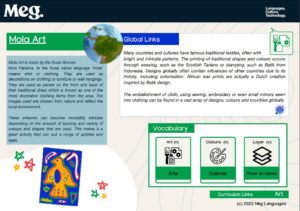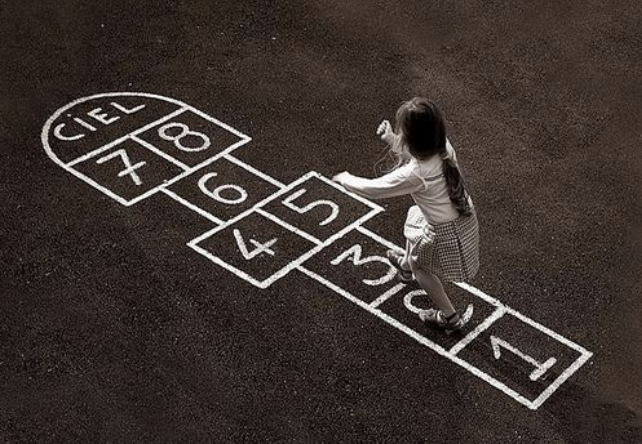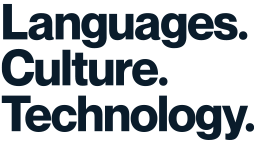10 Ways to Celebrate Hispanic Heritage Month in Your Classroom
Hispanic Heritage Month (or Latinx Heritage Month) is a celebration of the contributions that Latin-American and Spanish communities have made to the United States’ history, culture and communities. Across a full month, the legacy and presence of Latinos and Spaniards is recognized and shared through different activities, such as parades, talks and festivals across the US.
Hispanic Heritage Month used to be National Hispanic Heritage Week, but since 1988, it has been celebrated for a full month! September 15th to October 15th is the perfect time for this festivity, as several Latin-American countries commemorate their Independence Days during this month.
Join our Meg Spanish teachers who reflect on what it means to be Hispanic here:
Activities
If you would like to celebrate this fantastic month, and learn more about Latin-American and Spanish communities and culture with your students, explore our ideas here:
Global Learning Activity Cards – Hispanic Culture
Explore a range of activities linked to Hispanic culture with our ever-growing range of fun, cross curricular activities for all ages, from Prep to High School. From cooking, to arts, to making Maracas for music, there are activities for everyone!

Get crafty!
Get creative with your students as you learn about Hispanic Culture.
Alebrijes.
These most fantastical and colorful creatures are part of Mexican culture. You might have seen them before in the movie “Coco” as guides of the soul when going to the Land of the Dead. These creatures come from the imagination of a Mexican artist, who saw them while he was in a coma. Through time, Alebrijes have grown into a big part of the art scene in Mexico.
Learn more about Alebrijes and create your own Alebrije with your class. This video has a tutorial on how to make “Dante” and “Pepita” from the movie Coco. You can also make other designs according to your students’ styles. See where your student’s imagination can take them!
Let’s Play!
One of the most engaging ways to learn about other cultures is to play. The following games are very famous and a significant part of Hispanic Culture:
Dominó.
Invite your students to play Dominoes, like people from Cuba. Dominoes are usually played outside, on the neighborhood’s court or sidewalk, and sometimes, games get very competitive. Usually, men play this game while they talk about life, sports or family life. This is a space for fun, but also to connect more with friends and the community.
Play Dominoes either bringing a set of Dominoes to the class, or ask students to create their own Domino pieces with their styles. This can open the opportunity to learn numbers in Spanish, as students would need them to count when they play.

Rayuela.
Rayuela is a game played around Hispano America by children of all ages – it is just like Hopscotch! Rayuela is usually played in school backyards and parks.
Students can play Rayuela in the school yard. You will need chalk, a small rock or toy that can be used as a marker, and lots of energy to jump! Follow the instructions in this video and have fun jumping and counting.
Learn about Hispanic personalities
And for older students…. Hispanic Heritage Month provides a platform to learn about the influence that Latin, Spanish and Caribbean people have had on your country and the world. Discuss important personalities that have influenced your community or your country or made a global impact. Here are some pages to get the discussion started:
1. Actors. Actresses. Producers, Directors
3. Hispanic Artists, Smithsonian Expo
5. Hispanoamerican Politicians
Students can select personalities to present to the class. Explore their influence and how they represent the communities they come from.
Let’s Get Cooking!
Organise a cooking night or cooking activity with students to learn how to make some simple Hispano-American Cuisine – include families if possible and enjoy the most delicious and simple dishes. Check out Sweet and Sour Fruits and Arepas in our Recipe Cards.
Explore Meg Spanish Recipe Cards
Bilingual Labels.
A great way to feel closer to a culture or community is to learn their language. Spanish is widely spoken in Latin-American countries, and you can bring some Spanish words into the classroom, schools, or even students’ homes. Create bilingual labels to place around the classroom. Name daily used school supplies or classroom objects. Encourage students and parents to make similar labels and set them up around the house.
Take a look at these examples of Bilinguals Labels that Meg Spanish provides to our classrooms.
Decorate your classroom.
Bring Hispano America into the classroom by having selected spaces to share artefacts from this community. Flags, toys, images or fauna and flora from ecosystems in Latin America and Spain, Papel Picado in the best Mexican style, or the most colourful masks ready for any Carnival. Use the following links to get some ideas for your classroom space:
– Hispano-American flags and their meaning. Assign students the creation of one flag from Latin-America or Spain. Students can present the colors, symbols and the meaning behind them to each other. Each country represents their values and perspectives in their national symbols, and this is a great opportunity to get a better understanding of them.
– How to make Papel Picado? Prepare the materials and create together these colourful decorations.
– Learn more about the Carnival de Humahuaca. Watch this video with instructions to make a shiny and colourful mask. Encourage students to add their favourite colors and modify the designs.
There are many fun and informative ways to learn more about Hispanic Heritage Month, dive in and experience the richness of Hispanic culture and language! We would love to see how you celebrate this in your classrooms, please share your photos and tag us on social media!
7 September 2021 | Written by Paula Jiménez






